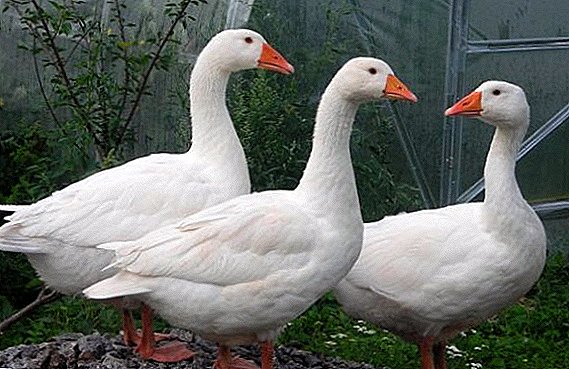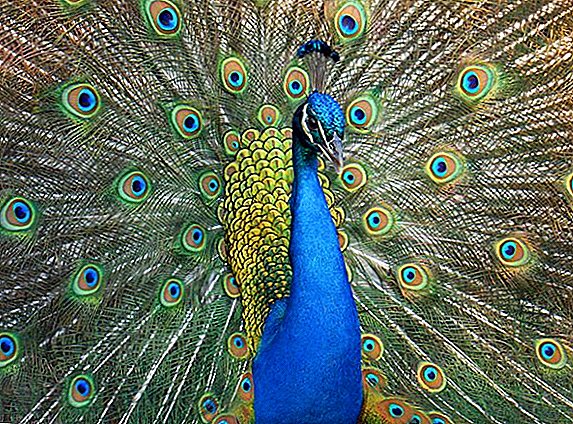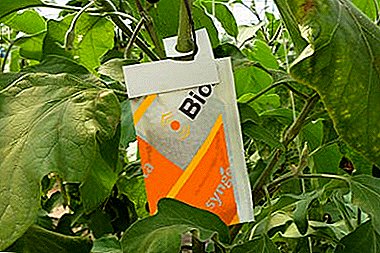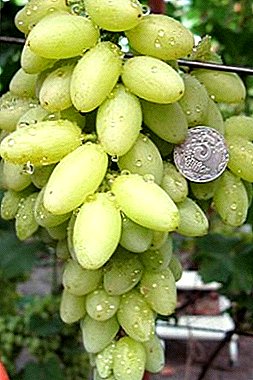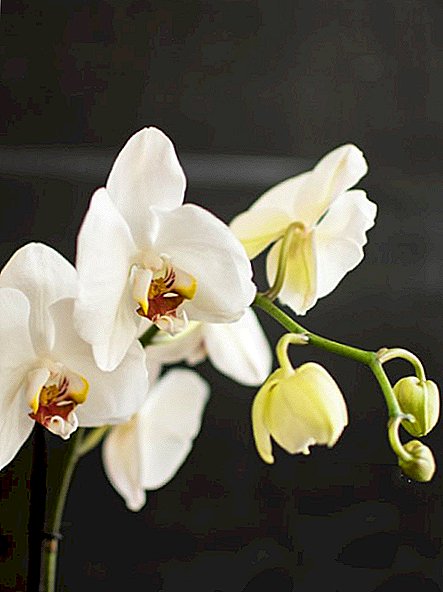 "Apple blossom" - This is one of the Phalaenopsis orchid varieties. It is this species that is considered an orchid with white pure bloom with no admixture of other flowers. The plant is suitable for both beginners and professionals - it is unpretentious in the care and long blooms. Get to know him better.
"Apple blossom" - This is one of the Phalaenopsis orchid varieties. It is this species that is considered an orchid with white pure bloom with no admixture of other flowers. The plant is suitable for both beginners and professionals - it is unpretentious in the care and long blooms. Get to know him better.
Characteristics and history of the name
The name "phalaenopsis" is translated as "the appearance of a moth." It exactly corresponds to the appearance of this orchid, no matter what sort it is. This is the most plastic and unpretentious flower, so it is from him that the collection of orchid gardeners most often begins.
Did you know? Vanilla, a popular and beloved spice by many, is the fruit of a vine orchid family.
The plant reaches up to 65 cm in height, has two stems. The roots are strong, long, thick. The leaves are collected in the socket at the base of the stem, they are smooth and shiny. The plant blooms twice a year, and this period lasts up to 3 months. The flower is large, resembles a butterfly. Happens a star-like and more rounded shape.
Every year, the stems and, accordingly, flower stalks on them can become larger. It depends on the proper care and conditions of detention. Phalaenopsis lives up to 15 years. However, it should be borne in mind that the orchid from time to time needs to be updated by division. 
How to buy and transplant white orchid
There are many orchid pots in gardening stores, so it’s important to choose the healthiest and most viable plant.
Check out the description of these varieties and types of orchids, such as venerian shoes, ludizia, cattleya, blilla, phalaenopsis, wanda, celogin, dendrobium, cymbidium, miltonia, cambria, oncidium and black orchid.
To do this, follow these tips:
- We look at the root system - it's easy to do, because most often the orchid is sold in transparent pots. Rhizome should be greenish or grayish. This indicates the health of the plant. It is best to take a flower, in which the tips of the roots of a pronounced green color - a plant in the active phase of development, and certainly not affected by disease. The roots that are on the surface must be firm and elastic.
- Inspect the leavesI - they are elastic, dense and green. They should not be affected areas, spots, spots and white plaque, as this may indicate the presence of parasites.
- Peduncle - Take the plant with unopened buds. First, you will enjoy its bloom longer. And secondly, the road home can be stressful for the orchid, so it can throw off the petals. Healthy buds are resilient and without excess spots or points.
Choose a healthy orchid - this is only half the battle, because it must also be properly transplanted. Do it only in a non-flowering state.
Important! Orchid brought from other countries does not have a quarantine passport. Therefore, nothing will protect you from buying an infected plant. In order not to bring home a sick flower, inspect it for the presence of slugs, centipedes, scutes. They often like to hide in the rhizome.
You will need:
- special substrate;
- pot with holes at the bottom;
- sharp knife;
- Activated carbon.

How to transplant:
- Soak the plant straight with the pot in water for 5-10 minutes. This will help to easily remove it from the tank.
Learn how to choose a primer and a pot for an orchid.
- Carefully remove the contents of the pot, rinse the rhizomes under warm water and remove the rotted and dry areas. Also it is necessary to clean the rhizomes of the old substrate. After that, leave the plant to dry on a towel or napkins.
- Activated charcoal must be thoroughly stretched and sprinkled on them all the places from which you cut the roots.
- Insert the orchid exactly in the pot, holding with one hand. Simultaneously with this action pour the substrate. Shake the pot lightly so that there are no voids left in the rhizomes. Make sure the orchid is potted tight and not falling.
- Water a little plant and put in a warm place in the apartment. Do not put under the sun or drafts.
Care for the flower at home
Sort "Apple blossom" is good because it is not picky about the care. Therefore, it is suitable for those who want to start an orchid for the first time and is afraid to ruin it. After all, the flower is not cheap. Therefore, it is important to know the basic rules of care.
Lighting
Place the orchid pot in the east or southeast of the house. It is advisable to put it on the windowsill so that the plant has enough light. But keep in mind, the daytime scorching sun can ruin it. Therefore, choose a scattered shadow or use blinds.
Important! The plant with its appearance will tell you about what it lacks. If the light, the leaves will be dark. But the yellow and red leaves - this is a signal to reduce sunlight. With a lack of moisture the leaves will curl.
For lack of light, an orchid may simply not bloom. Therefore, in dark rooms or in poorly lit areas, you need to create special artificial lighting, at least 10-12 hours a day. 
Temperature
Phalaenopsis feels comfortable at 17-27 ° C. Sudden temperature drops of at least 4 ° C can be stressful for the flower, so (especially during the cold season), rearrange the orchid from the window sill before airing the room. And it is better to find her a permanent place where you do not have to disturb.
Humidity and watering
Humidity should be from 40 to 70%. If there are no humidifiers, try to spray the stems and leaves with water more often. But do not pour it into the very rosette of leaves, otherwise the stem will begin to rot. Water no more than 1 time per week.
We recommend to read about how to water the orchid.
Look at the condition of the soil - dry, you can add water. But note that the top layer dries faster. Therefore, it is better to check the status of the rhizome and the soil in the pot. It is easier to do this if it is transparent. Condensation indicates the presence of moisture inside, but dry walls - a lack. 
Fertilizer
Several times a year it is necessary to add a special dressing to the orchid pot. Fertilizers are sold in stores. You need to breed them, strictly following the instructions.
Breeding
It is best to reproduce the flower in the spring - it will have enough strength for development. Vegetative method is the only optimal and correct for the white orchid.
It will be useful for you to read about how to propagate an orchid at home.
There are some of its varieties: the division of children, grafting, separation of the upper shoots, breeding bulbs and peduncles.
Video: Orchid reproduction by dividing the bush Vegetative division for a white orchid is better to do this:
- Carefully remove the plant from the pot and remove the substrate from the roots.
- Cut the roots into two parts so that each has at least 2 bulbs.
- Treat the incision sites with crushed activated carbon.
- Plant each part of the flower in separate pots.
Reproduction by children:
- Sprouts may appear on the stem, peduncle or on the root buds. This is the children, which we will cut off no earlier than 6 months from the moment of their appearance. Then they have several root processes and leaves.

- Cut the process and leave it for a couple of hours to lie down. Place a cut on the mother plant with charcoal.
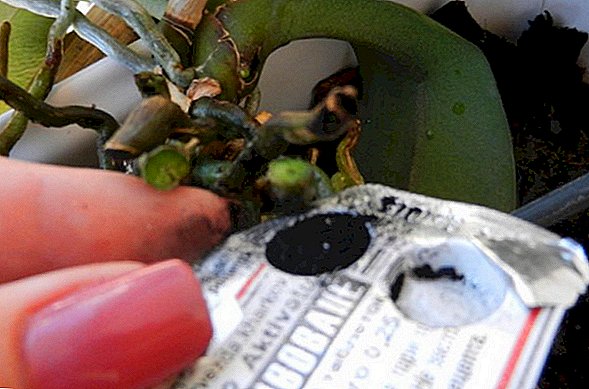
- Sit the baby in the prepared moist substrate. The first time the main thing is not to fill in - water it immediately and minimally.
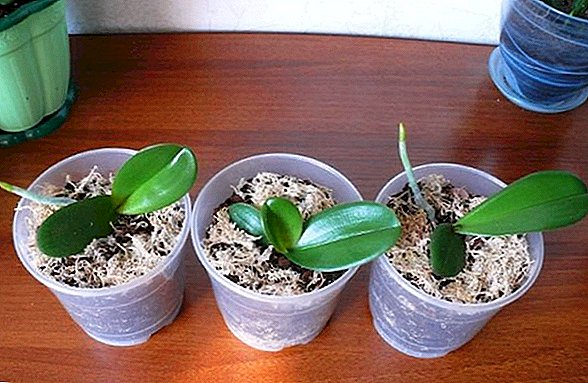
Rest period
The resting period is the state of the plant when it slows down the processes of growth and metabolism. In white orchids, such a period may occur after a long flowering. Climatic conditions affect this rarely. Phalaenopsis often does not have a rest period. However, in the winter, it is better not to disturb him much, not to flood it, and in no way case to repot it.
Pruning
After flowering, the plant must be cut. This is done during the rest or sleep of a flower, when there are no buds or flowers. The ideal time for pruning is October and November.
Read more about whether it is possible to reanimate an orchid, if the roots have rotted, how to make the orchid bloom, as well as how to care for an orchid that has faded.
For each type of orchid has its own rules for pruning. Phalaenopsis begin to cut when the flowers wither, but have not fallen from the stems yet. Use shears or very sharp scissors. Disinfect them with bleach solution.
Video: pruning orchids after flowering Cut the stems where the flowers were. From the root is left to 1 cm. Also look at the roots, if they are dark and brittle, they are best cut. Place the slices necessarily treated with coal.
Diseases and pests
Orchid is sick most often due to improper care. The same applies to the pests that appear when non-compliance with the rules of plant maintenance.
Read more about what to do if the orchid leaves turn yellow or fall, as well as why there are sticky drops.
Varieties of pests:
- thrips - small black bugs that leave black dots on the leaves and grayish-silver paths;
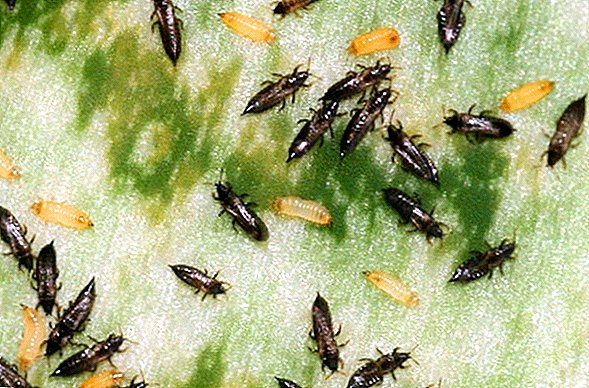
- false guard and shield - on the leaves appear imperceptible little bumps;
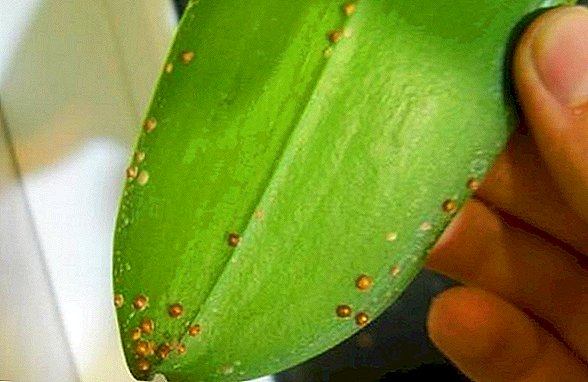
- mealybug - white, elongated, fluffy insects are infested at the junctions of the leaves and in the basal system;

- whitefly - small white, translucent insects with wings;
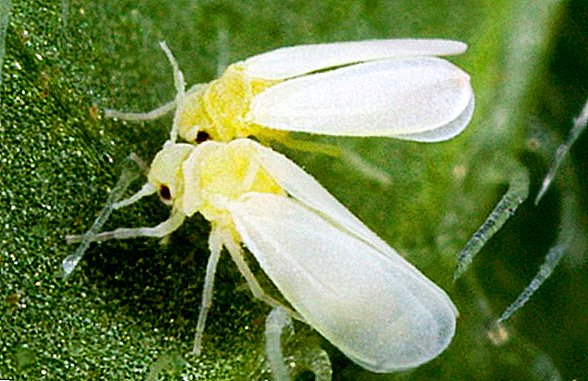
- pincers - leave the grooves and holes on the leaves;
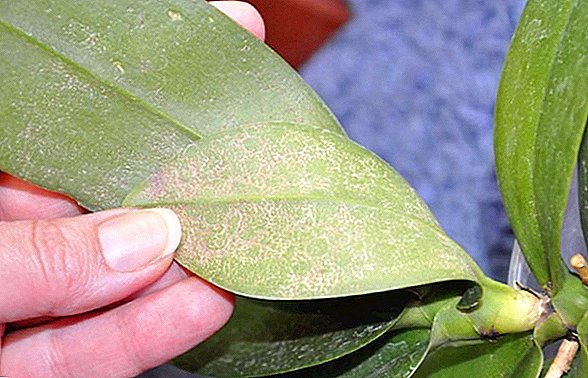
- nematodes - roundworms that eat leaves and stems from the inside.

Did you know? The orchid appeared more than 145 million years ago. This is one of the oldest plant families.
So, white orchid varieties "Apple blossom" will be the perfect decoration for any window sill due to its appearance. And unpretentiousness in leaving allows to get this plant even to the beginning florist. The main thing - do not flood the orchid and put it in a lit place.














